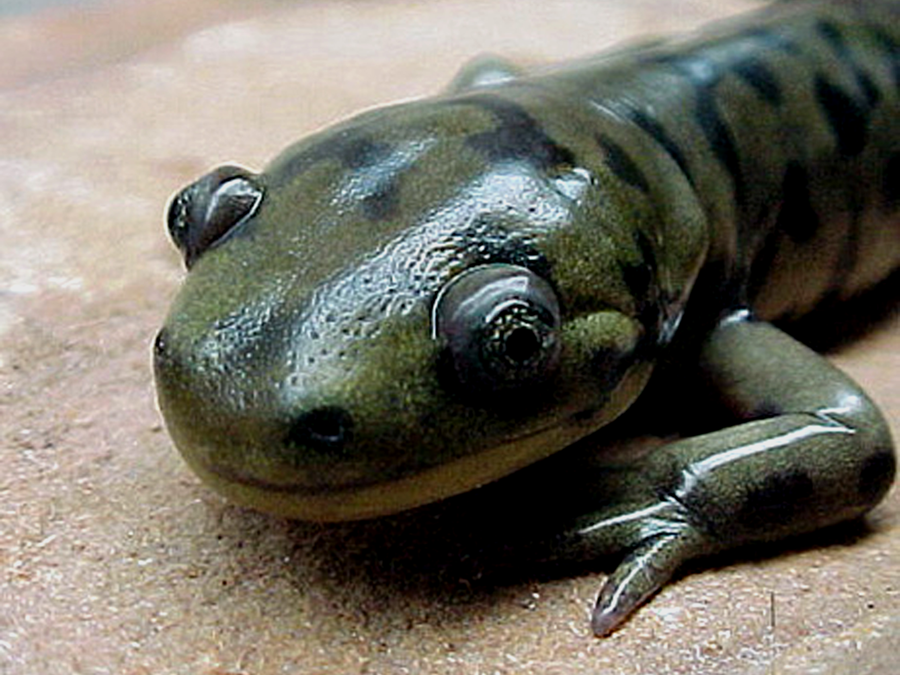Urodeles have a continental form.

Prof. Mumblebard claims: “Salamanders have varied habitats but are restricted to the Northern Hemisphere except for one genus which reaches Amazonia. This northern restriction is because these amphibians evolved – after the breakup of Pangaea – on the northern supercontinent of Laurasia. Because frogs arose much earlier than salamanders, they were already present in Gondwana when that southern supercontinent formed. If salamanders had crossed marine barriers southwards from their places of evolutionary origin, parts of Patagonia, Australia and New Zealand would presumably have provided suitable habitats for them. The absence of salamanders in these southern lands – in contrast to the widespread distribution of frogs – is therefore a historical accident of continental drift.”
Robin and the Honey Badger respond: “The restriction of salamanders to northern lands is no accident, being explicable by adaptation to extreme and predictable seasonality of both winter cold and summer warmth. What’s been overlooked is the crucial use of the tail by salamanders under such climates as a food reserve and as an appeasement for their predators. In reality there is no niche for salamanders or salamander-like amphibians under southern climates tempered by the oceans. This conclusion is based on the following observations:
- all salamanders retain a tail capable of regenerating after breakage in evasion of predators (whereas no frog retains an external tail in maturity);
- the sustained muscular contraction needed by frogs for leaping and swimming by powerful, synchronous strokes of the hindlimbs is impossible in extreme cold (whereas a dispensable tail gives salamanders an alternative tactic);
- the salamander’s tail provides a resource for hibernation, its rapid regeneration after breakage being facilitated by virtue of the flush of food in the northern summer; and
- no frog shows any evolutionary convergence with salamanders with respect to the tail.
Furthermore, the northerly evolution of salamanders fails to explain their absence from:
- the islands of the Caribbean, which have been reached by various lineages of frogs and should also have been accessible to the salamanders occurring on the nearby mainland;
- southern Africa, which remained connected to Laurasia long after Gondwana formed; and
- southernmost South America, which is easily accessible along the same Andean cordillera penetrated by salamanders as far as Bolivia.
The ecological, as opposed to historical, rationale is summarised as follows. Had the appropriate selective pressures been exerted south of the northern supercontinent of Laurasia:
- salamanders would have reached the Caribbean, Patagonia and South Africa; and
- certain southern forms of frogs would have converged with salamanders in the development of a dispensable tail.”

Please join us here at the Bio-edge with your own comments. In the discussion below we encourage links to any evidence supporting either Prof. Mumblebard or Robin and the Honey Badger. Illustrations are welcome but please cite all sources or we may be forced under copyright to delete your comment.
***
Featured image: Spotted Salamander (Ambystoma maculatum) by Camazine at English Wikipedia (CC BY-SA 3.0, https://commons.wikimedia.org/w/index.php?curid=16715137)

